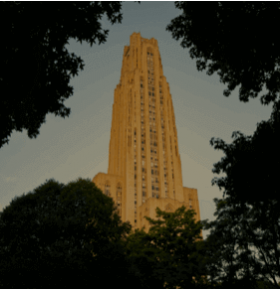
Subscribe to Pittwire Today
Get the most interesting and important stories from the University of Pittsburgh.An aluminum chassis for a quantum computer. A pontoon raft for collecting geologic core samples. A skeleton key for an observatory’s 130-year-old locks.
These odds and ends have something in common: They’re all products of a secret weapon of Pitt’s research enterprise, a machine shop where staff members combine a technician’s knowledge with a tinkerer’s creativity to create custom tools and parts for scientists.
“We do consulting, engineering, designing and research. In industry shops, each of those is a separate position,” said Shawn Artman, supervisor of the Kenneth P. Dietrich School of Arts and Sciences’ machine shop — one of three on the Pittsburgh campus (the others are housed in the School of Medicine and the Swanson School of Engineering).
Doing science requires real nuts-and-bolts infrastructure. And when you’re creating a next-generation quantum computer or testing the characteristics of a never-before-created substance, there’s no “buy it now” button. Instead, researchers in the Dietrich School look to Artman’s shop in Old Engineering Hall, which is equipped with milling machines, 3D printers and other tools in the hands of senior machinists Bill Strang and Jeff Tomaszewski.
The shop stands apart from those in industry for a number of reasons, Artman said. Over the past few years, the team has moved from a model where scientists simply provide the measurements for parts to one where the team collaborates with researchers, learning their needs and figuring out the most efficient and cost-effective way to meet them.
“We spend almost 50% of the time at our computers, designing and talking and doing our own research,” Artman said. And the team bills by the material cost rather by the hour. In most machine shops, these are rare practices — but they let the team take creative risks and take the time to do the job right.
That doesn’t mean it’s easy to get used to. New Dietrich School machinists invariably get to a point where a scientist hacks apart something they lovingly created to figure out what wasn’t working, Artman said. “They’re usually speechless. In industry, any time you’re scrapping something, it’s a waste of money. Whereas here, it’s what you have to do.”








Take the collaboration between Strang and Assistant Professor Michael Hatridge in the Department of Physics and Astronomy. The two have been especially close partners in the Hatridge lab’s years-long effort to create more efficient quantum computers.
“A lot of the things we need are weird enough that they don’t exist as commercial objects,” said Hatridge. Instead, he works with Strang to experiment with materials, finishings, machining techniques and binding substances to meet the exacting needs of the lab’s quantum computer. Those details have a direct influence on the final product, where temperatures are measured in nanokelvin and the computer’s operation in microseconds.
“This is a collaboration. It’s a conversation back and forth between us and the machine shop,” said Hatridge.
And as the Hatridge lab breaks new ground in quantum computing, the shop’s machinists are alongside them learning about new materials and techniques to help those advances happen.
The shop’s portfolio also reaches far beyond the campus’s physics labs. Artman once helped assemble an entire pontoon raft for geology researchers, and the group’s past projects also include a skeleton key for the Allegheny Observatory and camera-filter mounts for volcano photography.
The flexibility and creativity required of the shop’s machinists means that Artman has his work cut out for him when trying to hire new machinists. Speaking of Strang and Tomaszewski, “It takes a special person to do this,” he said. “Both of these guys could go out into industry and run entire businesses themselves.”
But the same traits are what allow the team to contribute to cutting-edge Pitt research.
When Artman’s work is part of a scientific breakthrough, he gets to tell his kids that he and his team are doing things that have never been done before. Now, his own daughter is a Pitt psychology major. And, after years of reading physics books his dad brought home, his 14-year-old son aspires to be a physicist.
“No idea where he got that from,” said Artman.
Photography by Aimee Obidzinski


